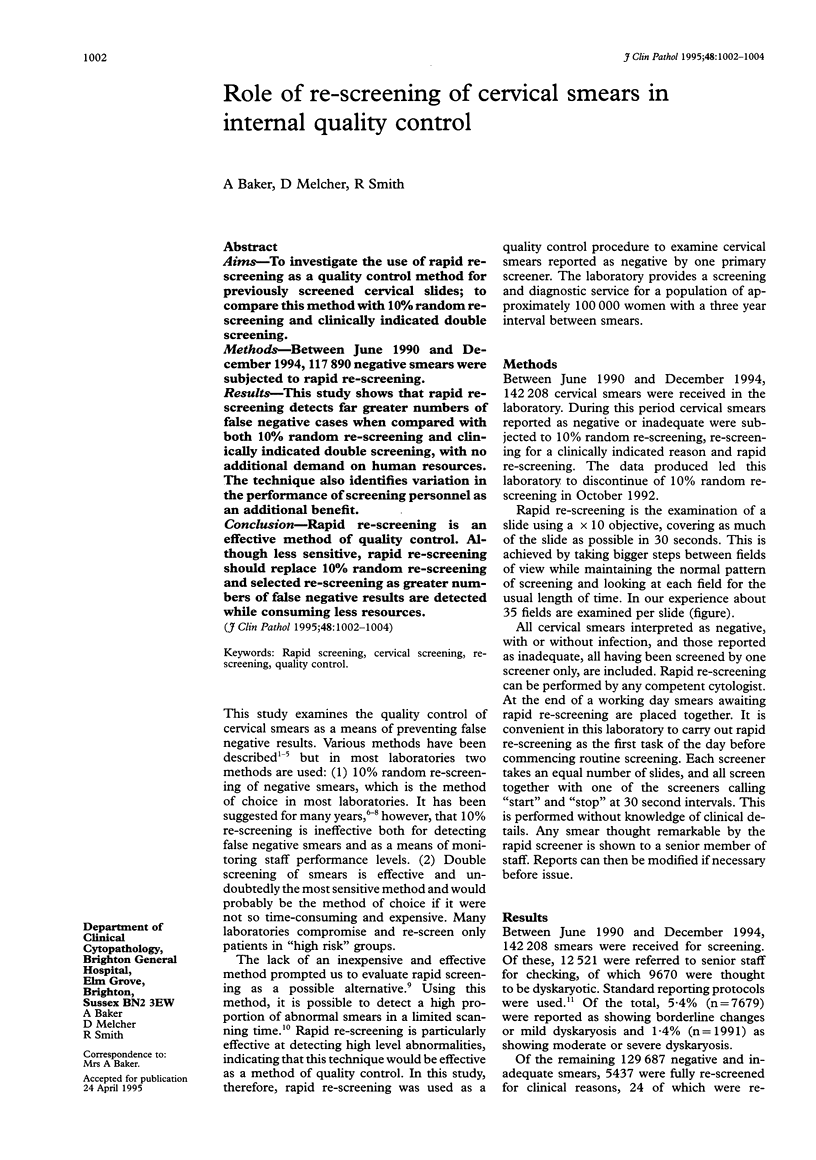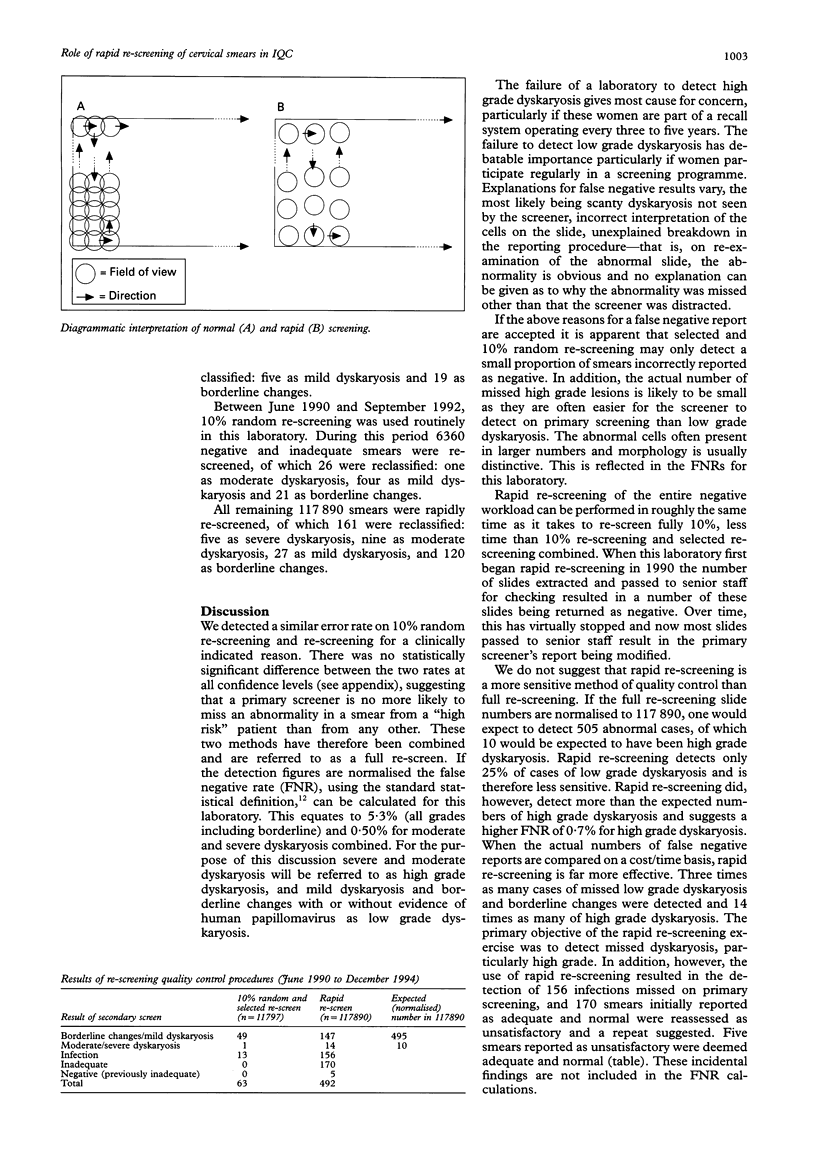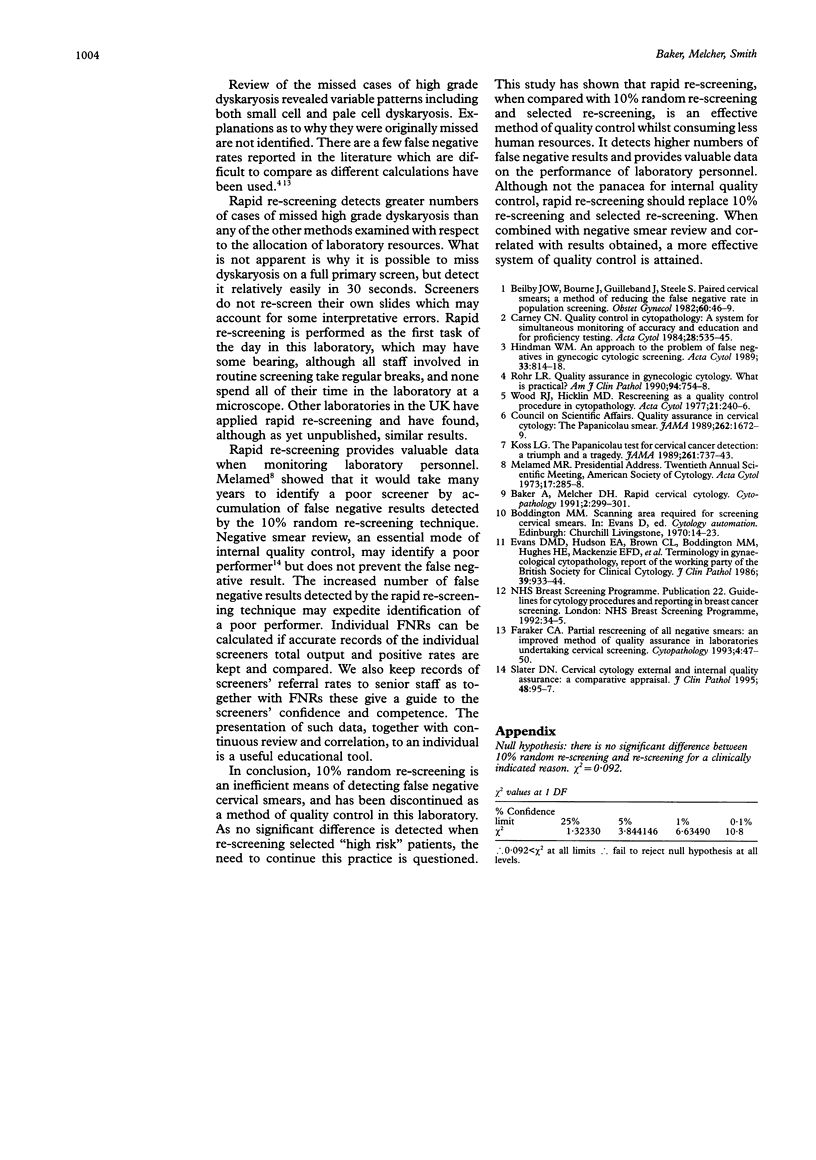Abstract
AIMS--To investigate the use of rapid re-screening as a quality control method for previously screened cervical slides; to compare this method with 10% random re-screening and clinically indicated double screening. METHODS--Between June 1990 and December 1994, 117,890 negative smears were subjected to rapid re-screening. RESULTS--This study shows that rapid re-screening detects far greater numbers of false negative cases when compared with both 10% random re-screening and clinically indicated double screening, with no additional demand on human resources. The technique also identifies variation in the performance of screening personnel as an additional benefit. CONCLUSION--Rapid re-screening is an effective method of quality control. Although less sensitive, rapid re-screening should replace 10% random re-screening and selected re-screening as greater numbers of false negative results are detected while consuming less resources.
Full text
PDF


Selected References
These references are in PubMed. This may not be the complete list of references from this article.
- Baker A., Melcher D. H. Rapid cervical cytology screening. Cytopathology. 1991;2(6):299–301. doi: 10.1111/j.1365-2303.1991.tb00504.x. [DOI] [PubMed] [Google Scholar]
- Beilby J. O., Bourne R., Guillebaud J., Steele S. T. Paired cervical smears: a method of reducing the false-negative rate in population screening. Obstet Gynecol. 1982 Jul;60(1):46–48. [PubMed] [Google Scholar]
- Carney C. N. Quality control in cytopathology. A system for simultaneous monitoring of accuracy and education and for proficiency testing. Acta Cytol. 1984 Sep-Oct;28(5):535–540. [PubMed] [Google Scholar]
- Evans D. M., Hudson E. A., Brown C. L., Boddington M. M., Hughes H. E., Mackenzie E. F., Marshall T. Terminology in gynaecological cytopathology: report of the Working Party of the British Society for Clinical Cytology. J Clin Pathol. 1986 Sep;39(9):933–944. doi: 10.1136/jcp.39.9.933. [DOI] [PMC free article] [PubMed] [Google Scholar]
- Faraker C. A. Partial rescreening of all negative smears: an improved method of quality assurance in laboratories undertaking cervical screening. Cytopathology. 1993;4(1):47–50. doi: 10.1111/j.1365-2303.1993.tb00072.x. [DOI] [PubMed] [Google Scholar]
- Hindman W. M. An approach to the problem of false negatives in gynecologic cytologic screening. Acta Cytol. 1989 Nov-Dec;33(6):814–818. [PubMed] [Google Scholar]
- Koss L. G. The Papanicolaou test for cervical cancer detection. A triumph and a tragedy. JAMA. 1989 Feb 3;261(5):737–743. [PubMed] [Google Scholar]
- Melamed M. R. Presidential address. Twentieth annual scientific meeting, American Society of Cytology. Acta Cytol. 1973 Jul-Aug;17(4):285–288. [PubMed] [Google Scholar]
- Rohr L. R. Quality assurance in gynecologic cytology. What is practical? Am J Clin Pathol. 1990 Dec;94(6):754–758. doi: 10.1093/ajcp/94.6.754. [DOI] [PubMed] [Google Scholar]
- Slater D. N. Cervical cytology external and internal quality assurance: a comparative appraisal. J Clin Pathol. 1995 Feb;48(2):95–97. doi: 10.1136/jcp.48.2.95. [DOI] [PMC free article] [PubMed] [Google Scholar]
- Wood R. J., Hicklin M. D. Rescreening as a quality control procedure in cytopathology. Acta Cytol. 1977 Mar-Apr;21(2):240–246. [PubMed] [Google Scholar]


